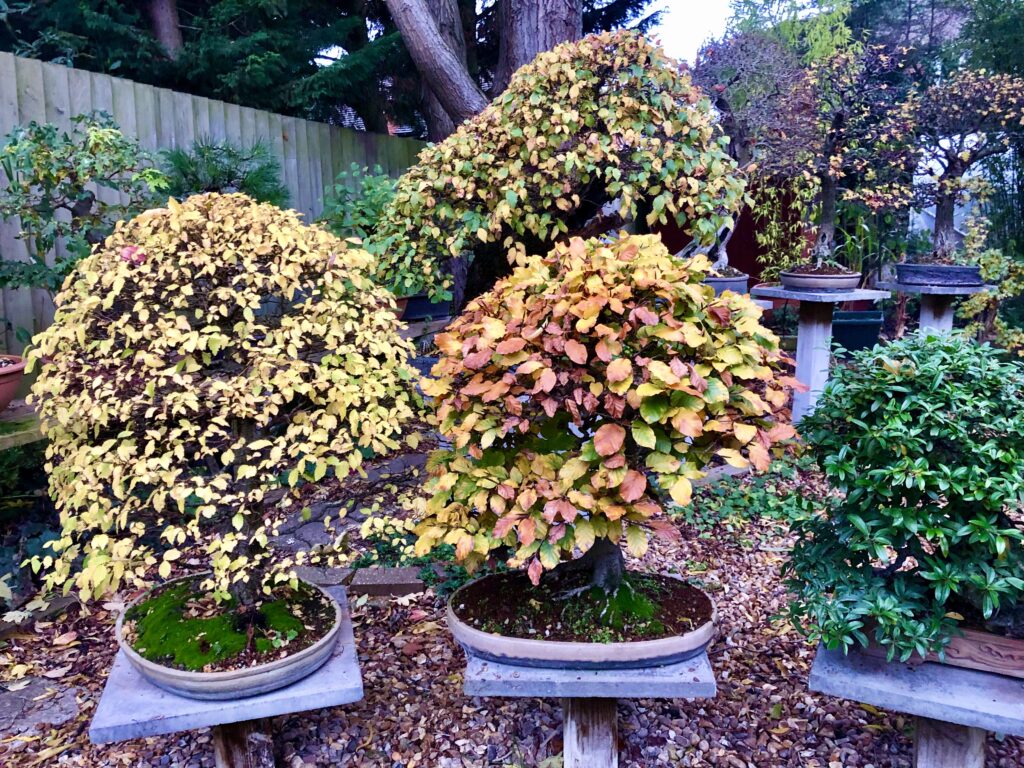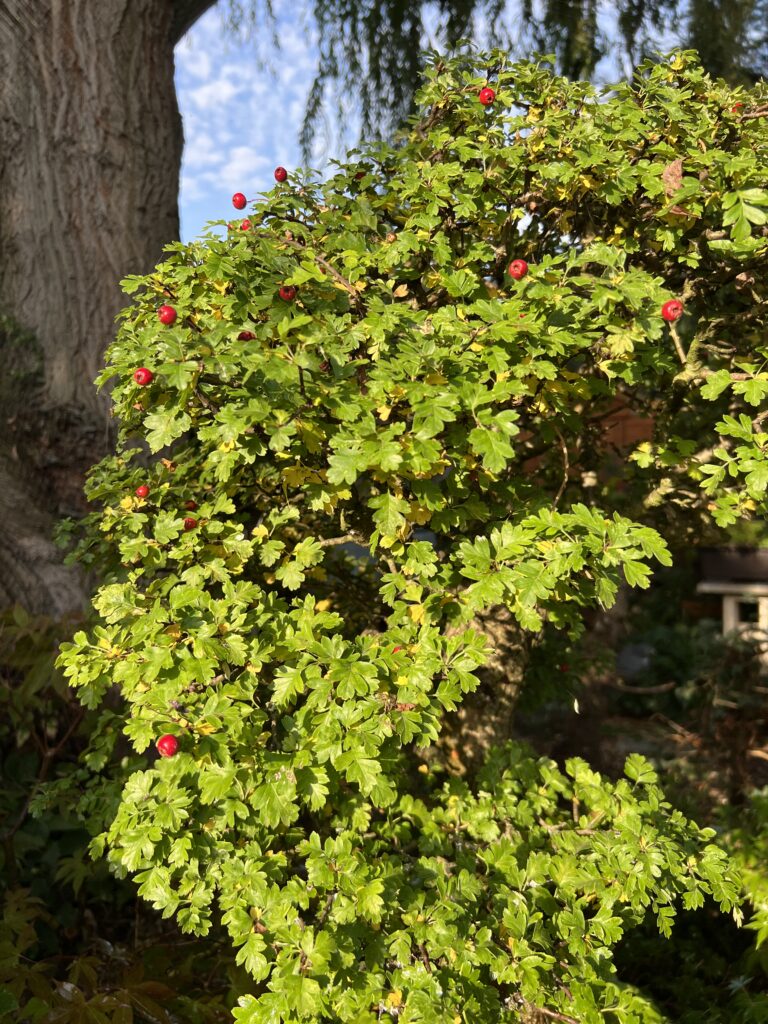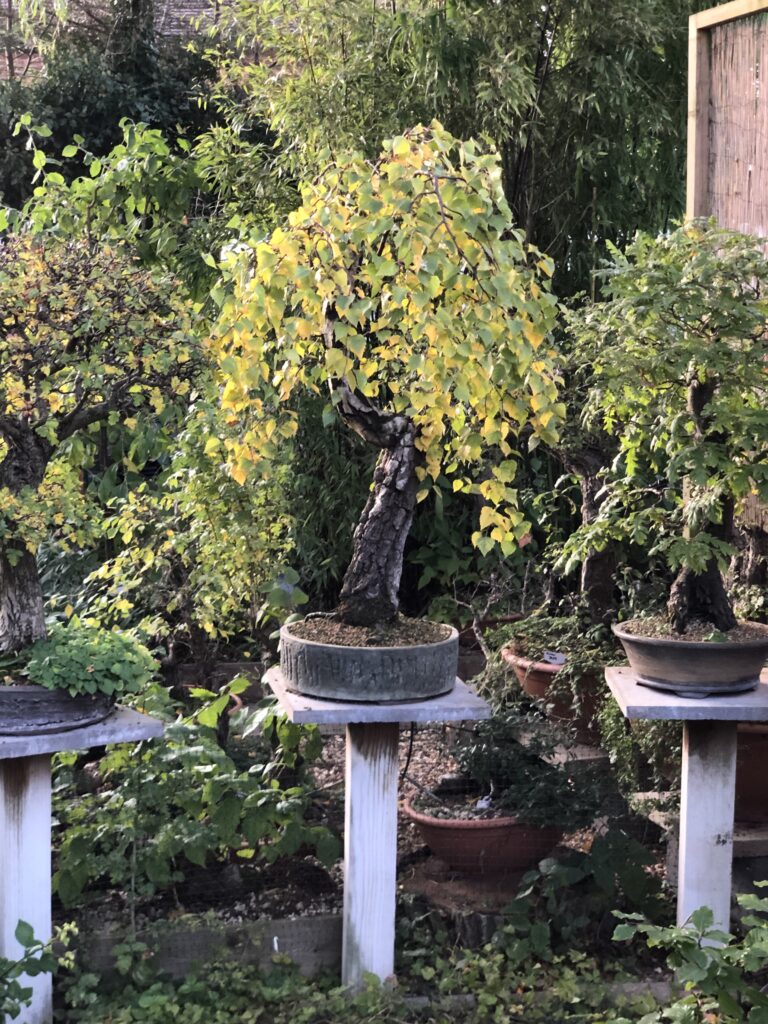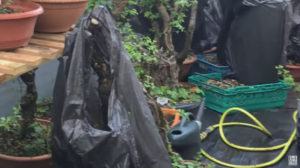
In late Summer it is worth being wary of deciduous bonsai that start go through full senescence, or Autumn colour, and drop their leaves early.
Early senescence can be seen in fully-grown trees in the wild or urban areas. When the roots are either contained or lacking enough water due to a lack of rain during the hot summer months, a deciduous tree can go through early senescence, or even a partial senescence to adjust its water demand. I will often see Birch (Betula) and Willow (Salix) dropping quite a number of leaves during long hot periods of the year and they seem to be very well adapted to adjusting their foliage mass according to water levels in the ground.

This adjustment of the volume of leaves within the foliage mass can also be observed on well-ramified deciduous bonsai during hotter periods of the summer, when senescence can be seen occurring on some of the inner leaves (above).
Note that in these cases the tree will successfully wall of the connection between the leaf-stem (petiole) and the leaves will change through their normal autumn leaf colours. If the leaves turn brown and are still attached to the branches, it is more likely that the tree has suddenly lost all access to moisture without warning through a lack of watering. This is a traumatic event that can lead to the loss of branches and even the whole tree.
However, I have seen bonsai, in particular Maple species, have their entire leaf-mass change colour and drop all of their leaves as early as August when ordinarily you would expect them to stay in leaf to some degree until at least mid-October here in the UK.
But what is going on when this occurs? Is it a sign of a lack of health? Is it something to worry about and how can it be addressed?!
Early colouring and separation of the entire foliage mass typically occurs when a tree has a small or weak root system, or is heavily root bound. Each cell in the roots of the tree can only store a limited volume of liquid (sugar) without it freezing during the depths of the winter ahead. This is because the greater the volume of fluid in each individual cell, the more difficult it is for the tree to ensure it remains liquid and does not freeze, expand and burst the cell walls. So a tree will limit the volume of liquid in each cell.
Ordinarily a tree would expand its new root system in late Summer and early Autumn to create a larger storage capacity while its leaves are still converting light energy. However, if the root system is weak or cannot extend, due to being root bound or often times growing in an impenetrable airless soil, the tree will simply cease the production of new sugars and drop its leaves early.
While trees suffering this event are not necessarily in imminent danger of dying, it is worth noting and rectifying the situation within the bonsai pot during the following Spring. Ensure that the soil used is well-drained as this ensures water is readily taken up into the core of the rootball during watering in the growing season. Ensure that the tree is not completely rootbound, if it is, aim to introduce at least an 1″ of fresh soil around the edges of the pot for new roots to grow into.
This small observation of when senescence occurs can tell you a lot about the condition of the roots on a new tree, or one otherwise unknown to you!

Sign up for the Bonsai4me newsletters
Our newsletter brings regular news from Bonsai4me. Updates, new articles, forthcoming events and exclusive content. Sign up for your copy!
IF YOU DO NOT RECEIVE A SUBSCRIPTION CONFIRMATION, PLEASE CHECK YOUR SPAM FOLDER!




